#an inhabitant of carcosa
Explore tagged Tumblr posts
Text
i love how i'm reading & analysing the early carcosa/king in yellow stories right now, and the first stars i see when looking out the window are aldebaran and the hyades (next to jupiter) and i'm there like
yay!!!
blorbo from my short stories!!!!!
#i always forget how wild it is that they're the same stars#these stories were written like 130 years ago which is nothing when viewed on a cosmic scale#that's where the horror-part of 'cosmic horror' comes in i guess#the king in yellow#an inhabitant of carcosa
9 notes
·
View notes
Text

2020
7 notes
·
View notes
Text

"An Inhabitant of Carcosa" created for "Character in Context" at the A.R. Mitchell Museum in Trinidad, CO, June 7-July 27, opening reception Friday, June 7 from 5-8pm. The original watercolor, several smaller preliminary studies, and prints are available: https://www.joannabarnum.com/an-inhabitant-of-carcosa
#watercolor#illustration#art#dark art#an inhabitant of carcosa#carcosa#ambrose bierce#king in yellow#cthulhu mythos#cosmic horror#horror art#horror fiction#lovecraft#horror#classic horror#literature
10 notes
·
View notes
Text
“Over all the dismal landscape a canopy of low, lead-coloured clouds hung like a visible curse. In all this there was a menace and a portent—a hint of evil, an intimation of doom. Bird, beast, or insect there was none. The wind sighed in the bare branches of the dead trees and the grey grass bent to whisper its dread secret to the earth; but no other sound nor motion broke the awful repose of that dismal place.”
Ambrose Bierce, An Inhabitant of Carcosa.
27 notes
·
View notes
Text
Revelation of Hali
For there be diverse sorts of death -
Some wherein the body remaineth;
And in some it vanisheth quite away with the spirit.
This commonly occurreth only in solitude
(Such is God’s will)
And, none seeing the end, we say
The man is lost, or gone on a long journey -
Which indeed he hath; but sometimes
It hath happened in sight of many,
As abundant testimony showeth.
In one kind of death the spirit also dieth,
And this it hath been known to do
while yet the body was in vigor for many years.
Sometimes, as is veritably attested,
It dieth with the body,
But after a season is raised up again
In that place where the body did decay.
1 note
·
View note
Text
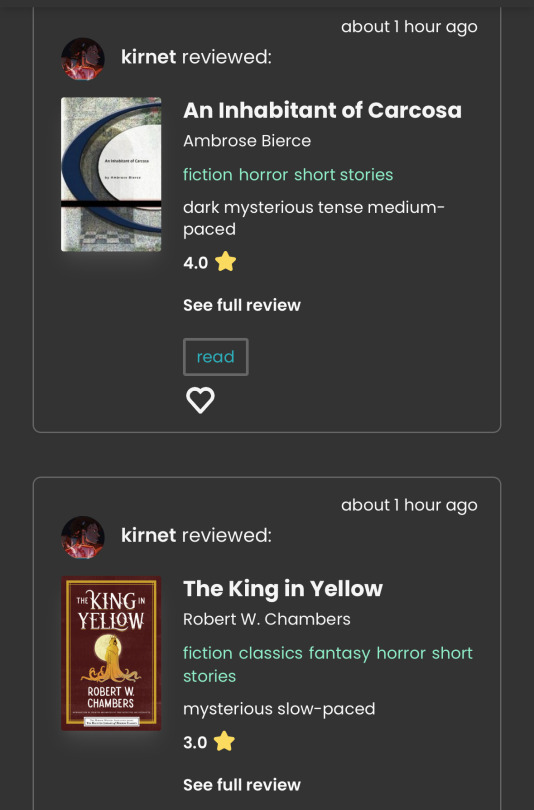
Something happened here
#I should make a TD inspirations reading challenge ooooohhhh#an inhabitant of carcosa is not but it was a minor inspiration for chambers and I really like it so I’m counting it#ramblings
9 notes
·
View notes
Text
picked up a copy of we’ve had a hundred years of psychotherapy and the worlds getting worse by james hillman im veryyy excited to read it
1 note
·
View note
Text
#reading signalis meta/lore discussion is about to give me an aneurysm#'i'm going to argue against this simple textually supported conclusion using real life physics in the dream logic game'#can you please be serious
yeah no i have time on my hands again i'm gonna yap about this actually because why is it so outlandish to suggest that elster and/or ariane just. turned the ship around.
'something something mass driver physics' yes i understand all of this would apply in a realistic scenario, however given the way the Penrose mission parameters are stated I'm not convinced this is the situation we are working with here. Ariane's entire role on the crew was to be the pilot and the off chance that they did discover a viable candidate planet on their sensors, we know that they were meant to adjust course to go and investigate further. To do this the ship would need its own propulsion systems and there's no reason to think it wasn't equipped to be steered. one of the first places you can go in the game is the ship's controls. They could clearly steer the thing.
'oh they are so far away from the solar system by now why would they bother' Listen I am aware of the long odds they would have of reaching any planet in the known solar system again after several years in deep space. Yes I am aware of how far out the oort cloud actually would be from inhabited space. That's all well and good but bioresonance is a thing. From the Song of the Gods book in game:
But every once in a while, some are born that cannot only hear and play this music of the worlds, but who can conduct it. Gifted individuals capable of manipulating the essence of the world around them.
Again. You cannot come into the dream logic game and argue based on realistic physics and dimensions when the entire crux of the story is that time and space (or at least perception of it*) is not entirely stable thanks to the Cosmic Horror Superpowers at play. This entire avenue of debate falls apart the second that the game map stops operating on euclidean logic.
(*and yes I have to acknowledge here that we don't know whether or not the material nature of the world is altered by this or if it's in everyone's head. I'm not going to present a definite conclusion on this one way or the other as the game itself is clearly uninterested in the distinction. In the most literal sense, it is what it is.)
'But Ariane was miserable with the Eusan Nation and felt like the ship was her home, she wouldn't want to go back' Okay now we're getting somewhere. This is entirely true and is supported by the fact that Ariane hid the news from Elster for at least a little while after receiving the transmission that they were left for dead. But even if Ariane was content to just die at home, as it were, as evidenced by the leave ending Elster is not okay with just letting the radiation run its course. Their options for treatment are limited to cryopod, which is explicitly on the ship in the event that the gestalt pilot falls ill and needs to be put on ice to delay disease progress and seek treatment (regardless of if they were expected to be able to find said treatment or not). Why not also use the one other option they have available to them?
Even if they didn't bother turning around immediately, there was no reason not to while the ship was still in good enough condition to do so. This is the only time their distance from the solar system really comes into play: the most likely outcome is that they were going to die out in deep space. What does it matter if they're coming or going?
It is the lowest effort hail mary they could have attempted. If they had the ability to do so, why not?
Usually the argument for turning the ship around comes up in trying to explain two things. a) how Ariane's bioresonance would be affecting anything across the expanse of deep space and b) the LSTR unit decommissioned from the Penrose program and used as the replacement neural template for newly manufactured units. While I do think the intro combined with factoid b in particular leads one to conclude the ship did crash land on Leng and that LSTR-512 was the decommissioned unit in question. The idea is further reinforced by what appears to be memories of her life with Ariane bleeding in as you would see with Gestalt memories, but is later conflicted with the information given about how far the Penrose mission took them away from inhabited space. This leaves the entire matter unclear, but this was also a deliberate authorial choice that has weight in the analysis.
I think you could also argue, however, that this is how the bioresonant disease manifests in LSTR units. There is a fairly strong indication that we do not play as the same exact LSTR unit through the entire game, and each type of Replika seems to manifest different symptoms when exposed. If the source of the infection is Ariane's dreaming remains as is also implied, I don't think it's much of a stretch to say these memories could be infecting the units even without 512's specific neural pattern as their base. But it's still a stretch.
I'm less concerned with explaining Elster's memories of Ariane though and more by figuring out what the hell Falke found at the bottom of the mine that made her patient zero, but i'm gonna have to chew on that one a while longer.
PSA: 'open to interpretation' doesn't mean your conjecture is equivalent to supporting evidence from the text
#“are you still looking for answers where there are only questions?” yes because i am a clown#also i'm pretty sure falke is just straight up the inhabitant of carcosa#not just as as matter of theme (which you could apply to most of the characters) but by how she's utilized in the story#which is a suspiciously neat bow on a very open ended package#one day ill spit out a coherent thought about this#signalis
5 notes
·
View notes
Text
Okay since people want to hear me yap here's the smol gist of Lore accurate KiY AU. (I hope I can make it as brief as possible lol).
First it's a double layered AU, with Faroe with Jane, and Arthur with the King.
I would like to start with how The King operates. Much like in the OG book, there's the King in Yellow book that drives people mad and other small things like his signs and his cultists that spread his influence on the human side of the world. If you even touch anything that has its influence, you gradually become exposed to more supernatural things until eventually The King can just harvest you and take you to Carcosa. However, for the last few decades, The King has been reliant on his cultists, thus more activities in the human world and eventually their actions got the notice of certain people, let's say Lester and Yang PI.
Arthur and Parker got involved with the supernatural much earlier than canon Malev. They weren't in too deep with it yet, but they're aware that there's other entities and they need to protect people from it. Eventually, Arthur split off from Parker and his daughter because he feared that whatever cult they were dealing with would eventually get to his family. He told Parker to watch over Faroe and Daniel and then went off alone.
During this time, he found John/Jane's book and for the most of it, kept it far far away from the King, until Arthur realises that he was going to die soon. Being too close and too exposed to all the supernatural influences of The King, made him viable to be whisked away. So, in his final moments, he hid the book away before "disappearing" from the world.
All the while that's happening, Faroe believed that her father had abandoned her and grew up resenting the man. (She was abandoned around her teenage years).
When Faroe became an adult, she got an anonymous letter that came from Arthur's old office (note: Parker, Faroe, and Daniel are in NY, and Arthur asked Parker to move there to watch over Faroe). She found Jane's book hidden under the floorboards and then bam, Jane is stuck in Faroe's head.
Faroe's story more or less goes the same way Arthur does, but she discovers her father's trail. Letters he addressed to people about the cults and The King, etc. and also his final will which revealed that he was indeed killed by The King.
For Arthur and the King, Arthur was exposed too much to The King's influence, at his last moments, his body was taken by The King, while his soul entered Carcosa. But, everything that happened between the two of them was unexpected, to say the least.
One, Carcosa was a dead city. The people in it were withering away and The King has been struggling to keep them alive. Two, Arthur wasn't affected by the madness that seeps off of the city and also didn't wither away like the others did. So, the two eventually had a mutual agreement that they'd figure out what exactly happened to the inhabitants of Carcosa and why Arthur was so special. During this, they had a mutual understanding and respect for one another and were soo close to becoming friends. Imagine a wiser Arthur with a John for this segment, that's essentially what their situationship is.
Eventually, Arthur realised what was happening with the people of Carcosa. The longer he was with The King, the more he understood what he was. He came to the conclusion that The King represents not only madness, but also decay and death. The madness of men to hide away the dread of death and decay through opulence, and because The King had lived with so much power and glamour for so long, he had forgotten the "decay" part of his being and his people were simply expiring. The King in all his pride, denied this and in their argument, decided to scramble Arthur's mind and forced him to play music for him for all eternity.
And that's so far what I got to share publicly lol. These are all just my insane ramblings of this thing, whether or not it ends good or not we'll see lol.
I unfortunately am not a fic writer so I may not write this except for my short illustrations of this AU hehe.
I would say that everyone is sad with their circumstances, even The King. Hehe
#malevolent#malevolent podcast#malevolent au#Lore Accurate KiY AU#arthur lester malevolent#arthur lester#faroe lester#faroeverse#john doe malevolent#jane doe malevolent#the king in yellow#kiy malevolent#also don't ask me what time period or what ages people are#i honestly couldn't keep track of the canon ages of everyone on canon Malev 😭#but I imagine Faroe to be at least 20-25
157 notes
·
View notes
Text
Carcosa? The monstrous city at which unspeakable horrors are done in name of the great old one Hastur they call their leader? Great. How much is the average rent price?
The king of Carcosa will eventually consume and destroy the entire city with everyone in it when the time comes to increase his power? Well that's every politician ever for you, tell me something new.
The entire city is populated by a cult that worships the King and they often do unspeakable horrors in his name? Yes im aware with how political parties work
The nearby lake of Hali is said to be inhabited by a being of unspeakable power which sometimes comes into conflict with the spawn of Cthulhu at that lake? YOU'RE TELLING ME THIS PLACE EVEN HAS A NICE LAKE TO SIT NEXT TO!? And yes I am also aware about how tourists can be annoying sometimes.
Your spooky "Black stars on a bright sky" you keep mentioning imply there is little air pollution, since seeing a large amount of stars in a city is often wishful thinking. Housing crisis considered this place doesn't seem half bad
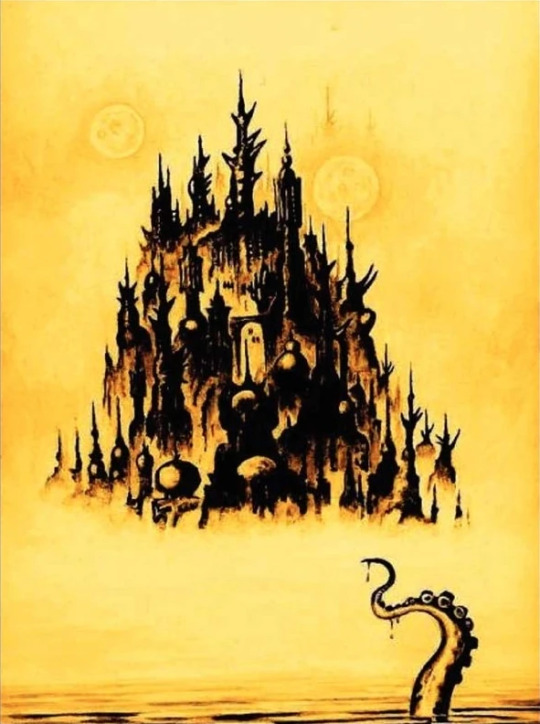
#hastur#the king in yellow#the feaster#lovecraft#lovecraftian horror#funny#literature#books#book#feaster#carcosa#Cthulhu#cthulhu mythos#cosmic horror
1K notes
·
View notes
Text
So, about Sansa's name origins, I mentioned the book "The Slayer of Souls" by Robert W. Chambers the other day.
This isn't something new, but I think we should talk more about it.
GRRM has paid tribute to Robert W. Chambers by naming some places and characters in ASOIAF:

[Source]
~~~
youtube
~~~
Carcosa is a fictional land that first appeared in Bierce's 1886 story "An Inhabitant of Carcosa" (included in this collection), and later is appeared Robert W. Chambers's The King in Yellow. It has since been usedby many other fantasy and horror writers and poets including H. P. Lovecraft, Joseph S. Pulver, John Scott Tynes, George R.R. Martin, and many more. Carcosa has even been used as a location in the HBO's True Detective and Netflix's The Chilling Adventures of Sabrina. [Source]
~~~
But apart from Carcosa and the Yellow Emperor, maybe there's something else that GRRM took from Robert W. Chambers works to put it in ASOIAF.
Indeed, Robert W. Chambers's "The Slayer of Souls" has a chapter and a character called Sansa:


~~~
Robert W. Chambers's Sansa is not exactly similar to ASOIAF Sansa; in fact, I found the character close to Melisandre. But the thing is, that maybe, this character is the origin of ASOIAF Sansa's name.
And the title of book "The Slayer of Souls," reminds me of this:
I dreamt of a maid at a feast with purple serpents in her hair, venom dripping from their fangs. And later I dreamt that maid again, slaying a savage giant in a castle built of snow. —A Storm of Swords - Arya VIII
There's something so satisfying in finding more Sansa & Slayer associations ❤️
89 notes
·
View notes
Text
if i had a euro for every time i read about a beautiful celestial object in a fictional story and then spotted it IRL on the same day when looking up at the night sky through my window with my own eyes... i would have two euros. which isn't a lot, but it's weird that it happened twice
4 notes
·
View notes
Text
Verrdette's Lore of Lords/Reference hub (Carcosa AU)
|will be updated as I learn more|
Status: 8/21 I have learned the anatomical contents of each "bodily humour," these will be the source of each Lord's magic. Learned about the City of Carcosa and the King in Yellow. Rereading SCP 2264...
My Lords:
Albedo / Phlegmatic water 🜄 (praying mantis) phlegm
Nigredo / Melancholic earth 🜃 (locust) black bile
Citrinitas / Choleric fire 🜂 (giant hairy scorpion) yellow bile
Rubedo / Sanguine air 🜁 (dragonfly) blood
Long, long ago the four Lords lived in harmony, then everything changed when the Earth Lord attacked. For more lore of the Carcosa AU, read below
Disclaimer - you may use this lore yourself, just credit this post. None of this is canon to scp, just a fun little set of ideas in my brain. To make it simple, let's call it the Carcosa AU. Credits to Metaphysician for creating Alagadda! Alagadda (Human name: Carcosa) - An ancient city whisked away into a role of an interdimensional nexus, where its inhabitants are cursed to live and rot, but death is nonexistent.
The Tale of the Black Death - A prophecy foretold by Alagaddans, often in jest and mockery at death. There are two versions of the prophecy, one false and the other true: The tale depicts the god of Death vanquished by the ascension of the Hanged King and the City of Alagadda. With the philosopher's goblet, Death cannot take them.
(the rest is WIP) The Court - The Hanged King - The Ambassador - (will be researching the King in Yellow) The Four Lords of Alagadda - (trying to figure out how to organize their lore in tumblr) Death - The Black Lord -
------------------------------------------------------------------------------ If you wish to have the text icons for alchemy use this site.
For a more general understanding of these four temperaments (without the mess of Wikipedia), refer to this small document.
p.s. to this document, I am Melancholic/Phlegmatic. How silly. Have a go if you wish.
I am currently studying this book - The Hermetic Museum: Alchemy & Mysticism by Alexander Roob - It's a collection of significant works concerning Opus Magnum. Beware: the information is as shallow as Rubedo, so if you're looking for long alchemy procedures, it's best to search it on your own if you are short on cash. Even then, I still highly recommend it. It's a great historical read.
24 notes
·
View notes
Text

A mood study I did before “An Inhabitant of Carcosa,” to work out the vibes and colors I wanted. Available.
#landscape#landscape painting#eerie landscape#lovecraft#lovecraftian#carcosa#cosmic horror#horror art#dark art#watercolor
18 notes
·
View notes
Note
Ayyy carcosa, feel free to ignore if this is too personal for the two of them but do your NHP partners have a sort of "avatar" for themselves?
Like for example a fellow lancer of mine has an enlightenment-class who represents herself holographically with a mature (dare I say MILFy if I'm being honest) but with a head composed of innumerable inky tendrils with eyes on em.
Ty!
// Oh hey, not an anon // No not too personal // My specific instance of SCYLLA prefers simply being the Gorgon she inhabits // Sierra does like to use her subaltern for day-to-day stuff // But the hologram is what she uses in my HUD // Older holograms seem to be common, especially with the SIDEWALK variants, but Sierra likes to look like a very pretty woman // I'm not biased you're biased.
#lancer rpg#lancer ttrpg#lancerrpg#lancer#lancer meme#lancer memes#lancer NHP#lancer gorgon#horus gorgon#gorgonlove#lancer SCYLLA#ask-CARCOSA
14 notes
·
View notes
Text


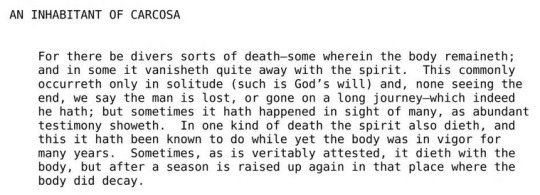
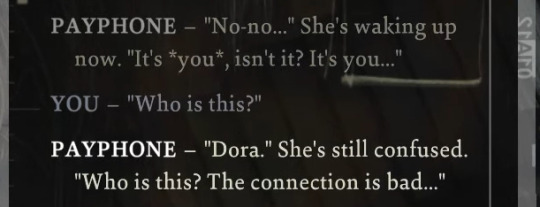

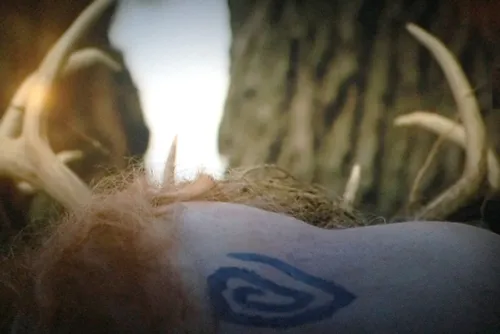



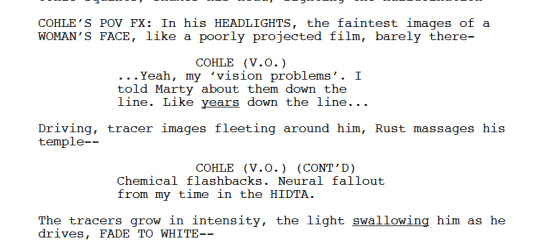

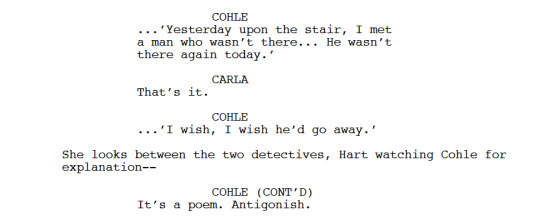




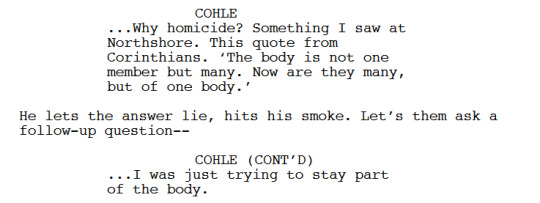


what if Dora Lange haunted Rust Cohle?
True Detective Original Scripts //True Detective (2014) // An Inhabitant of Carcosa, Ambrose Bierce // Disco Elysium (2019) // The King in Yellow, Robert W. Chambers // Excerpts from "Duned", Natalie Diaz // Earthmover, Have a Nice Life // Ptolemaea, Ethel Cain // Medicine, Gustav Klimt (destroyed 1945) // my art
#true detective#does this make sense or is this just entirely localized to my gray matetr#dora lange youre MY hanged man and i have so many thoughts about you#ramblings#web weaving#also i was getting de screenshots and i almost exploded bc i forgot harrys ex is dora... its perfect its HAUNTING THE HAUNTING WORKS#long post
228 notes
·
View notes